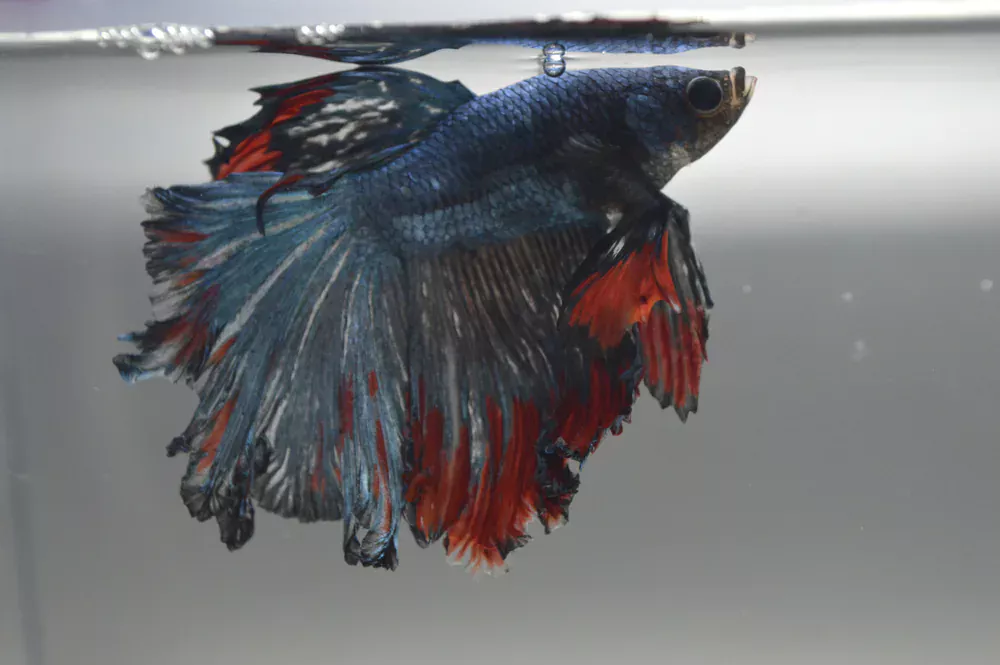Many of us have got our first betta fish from the pet store. We were so excited to bring it home and take care of it, but then we noticed that there was something wrong with its fin. The Betta Fish Disease called Fin rot is one of the most common diseases that affect these beautiful creatures. It can make your betta fish very uncomfortable and may even leave him unable to swim properly or eat food properly. If left untreated, it will get worse!
- 1 What Is Fin Rot Betta?
- 2 Is Betta Fin Rot Contagious?
- 3 Does Fin Rot Kill Betta?
- 4 Does Fin Rot Hurt Betta Fish?
- 5 Types Of Fin Rot
- 6 Why Do Betta Get Fin Rot?
-
7
How To Spot Fin Rot Betta?
- 7.1 1- Rotting Of The Fins
- 7.2 2- Cloudiness Of The Eyes
- 7.3 3- Loss Of Appetite
- 7.4 4- Inability To Swim Properly
- 7.5 5- Red Streaks On The Body
- 7.6 6- White Patches On The Body
- 7.7 7- Swelling Of The Body
- 7.8 8- Swollen Stomach
- 7.9 9- Breathing Difficulties
- 7.10 10- Washed Out Color
- 7.11 11- Black Spots
- 8 How To Prevent Betta Fin Rot?
- 9 Stages Of Betta Fish Fin Rot
- 10 Can Betta Recover From Fin Rot?
- 11 How To Treat Fin Rot In Betta Fish?
- 12 Fin Rot Betta: Signs Of Recovery
- 13 Conclusion
What Is Fin Rot Betta?
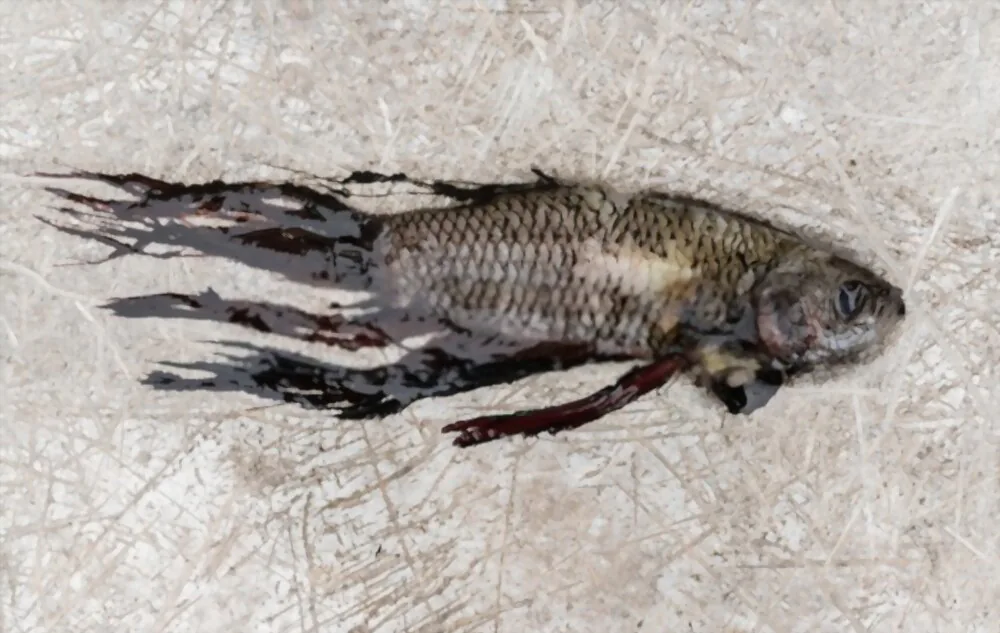
Fin rot disease is a bacterial infection of the fins, otherwise known as Aeromonas. This bacteria infects fin tissue and spreads quickly throughout the body of your betta fish.
Fin rot is actually very common in betta fish and can be caused by poor water quality, stress from living conditions, or other reasons. However, with proper care, you can prevent fin rot from happening to your beloved pet. We will discuss all this stuff later in this article.
Is Betta Fin Rot Contagious?
Fin rot is highly contagious in betta fish. This disease can transfer from one fish to another through the water. If you have more than one betta fish in your tank, then it is possible that they will contract fin rot if you don’t take care of the water quality.
In this case, it is best to quarantine your pet immediately so that the other betta fish do not contract it as well.
Does Fin Rot Kill Betta?
If left untreated, fin rot can lead to death. However, if you treat it in time, there’s a good chance of recovery. If you’re wondering how long it takes for fin rot to kill betta fish, this depends on the severity of their infection and how quickly they respond to treatment. The sooner you get your Betta checked out by a professional, the better!
Does Fin Rot Hurt Betta Fish?
Yes, fin rot does hurt very bad. It is painful for the fish, but it can also be painful for you to watch your pet suffer. But treatment options exist that will help ease the pain and discomfort experienced by your pet.
Types Of Fin Rot
Fin rot generally has three types:
1- Bacterial Fin Rot
Bacterial fin rot is the most common type of fin rot. It is caused by a bacterial infection and can be treated with antibiotics.
2- Fungal Fin Rot
Fungal fin rot is another common type of fin rot in bettas. Fungus needs warm and moist environments to thrive, which makes it an ideal environment for betta as well! Fungus grows on the fins of fish that are kept in dirty water conditions or have poor circulation in their tanks. It’s important to keep your betta’s habitat clean so that he doesn’t get infected by this fungal disease.
3- Parasitical Fin Rot
Parasitic infections like anchor worms and flukes can also cause damage to a betta’s fins (as well as other parts of its body). These parasitic infections are more difficult to treat than bacterial or fungal ones because they’re harder to spot until later stages when they’ve already caused significant damage; however, there are some preventative measures you can take such as adding beneficial bacteria into your tank’s water supply that fight off parasites before they become an issue. (More prevention measures later in this article).
Why Do Betta Get Fin Rot?
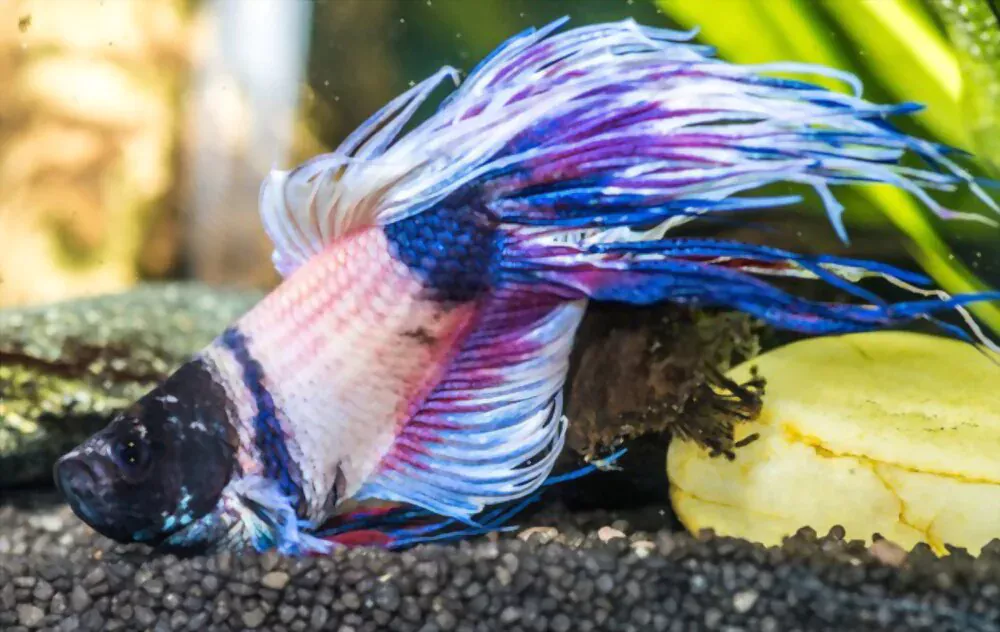
Following are some of the most common reasons why betta fish get fin rot:
1- Poor Water Quality
Fin rot disease is often caused by poor water quality. The bacteria that causes fin rot thrive in dirty water. If you notice your betta’s fins turning black and slimy, the first thing to do is check its water quality. Use a test kit to determine whether or not your tank has proper levels of ammonia and nitrates. If it doesn’t, then you should replace the filter and change the water as well.
2- Poor Diet
Fin rot disease is also caused by feeding your betta an improper diet. When a betta fish eats a diet containing too much protein or fat, it can lead to excess gas production which can then cause diarrhea or vomiting which makes the water unhealthy for all the other fish.
3- High Ammonia Levels
Betta fish are very sensitive to ammonia, which is a byproduct of the decomposition of their waste products. Ammonia can cause fin rot and other health problems in Bettas if it is not removed from the water. Use a filter to balance the ammonia levels in your aquarium.
4- Poor Water Circulation
Poor water circulation is another cause of fin rot in betta fish. If there is no filter in your tank, then you may find that your fish are sticking to one side of the tank and not swimming as much as they should be. This can cause stress and make them more susceptible to disease because they are stressed out and don’t have enough energy to swim around as much as they normally would.
5- Unstable Water Temperature
Fin rot disease is most common in coldwater species, such as goldfish and guppies. The reason for this is that they have sensitive skin which is less able to tolerate the cold. Bettas are also sensitive to high temperatures, which can lead to infections in their fins and gills. If your betta’s water temperature isn’t at a suitable level for them, it could make them more susceptible to fin rot disease.
6- Overcrowding
Betta fish are known for being territorial and aggressive when it comes to their community tank mates, so it may not be surprising that they will fight with each other over territory and food sources. This can lead to fin damage and later can turn into fin rot disease. So make sure they have enough space or food in their tank without bullying or fighting amongst themselves.
How To Spot Fin Rot Betta?
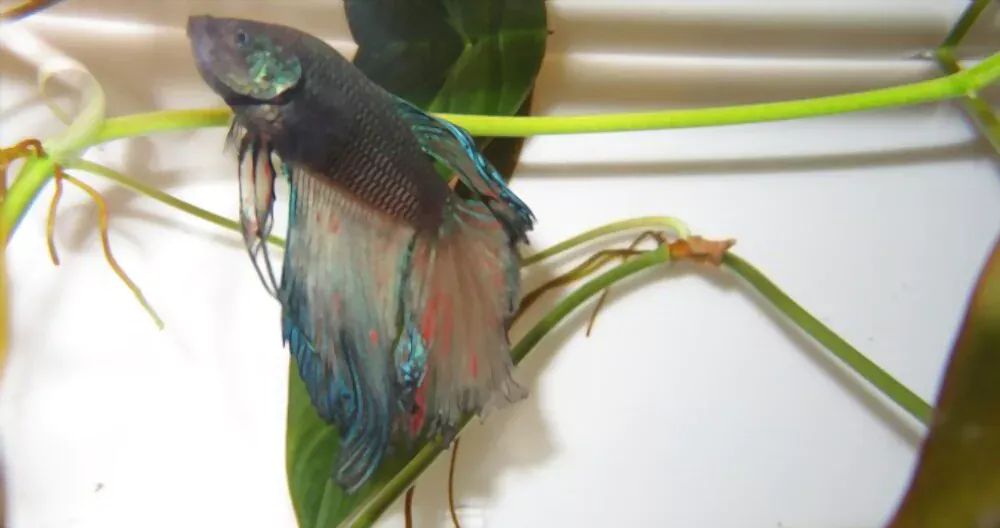
There are some signs that should be taken into consideration if you wanna know whether your betta fish has fin rot disease or some other health issues. If you notice any of these signs and symptoms then it could mean that your pet may be suffering from fin rot disease:
1- Rotting Of The Fins
The first and most important sign of fin rot disease is rotting of the fins. This is one of the most common signs and it occurs as a result of a bacterial infection that causes severe damage to the fins. When your betta fish starts having problems with their fins then this could mean that they have developed fin rot disease or something similar such as tail rot disease or tail biting disease or any other type of bacterial infection that affects their body parts including their gills, skin, and even eyesight.
2- Cloudiness Of The Eyes
This is another common sign of fin rot disease in betta fish. Cloudiness in the eyes can be white or gray, but it also may appear red or orange depending on how advanced the infection is and how long they’ve had it.
3- Loss Of Appetite
Loss of appetite is another sign that your betta might have fin rot disease. Although this symptom is not specific to fin rot, there is a possibility that it can be caused by fin rot, including stress and illness. If you notice that your betta has suddenly lost his appetite, it is important to monitor him closely. A lack of appetite can lead to other problems in the long run and fin rot is no exception, so it’s important to take notice if your betta stops eating his food.
4- Inability To Swim Properly
If your betta fish is having difficulty swimming, it could also mean that your betta has developed fin rot. This can cause difficulty in swimming, unable to swim upside down or sideways, or swimming in circles.
5- Red Streaks On The Body
Red streaks on the body is another sign that you should look. This is often accompanied by other signs and symptoms, such as:
- The betta fish’s fins will get shorter and shorter until they fall off.
- The betta fish has trouble swimming or refuses to swim (as discussed earlier).
- Your betta may have red streaks on its body, which can look like blood but isn’t actually blood.
6- White Patches On The Body
A white patch can also be caused by fin rot on the betta fish body. If you see any kind of white patch on their body followed by other signs, then it could indicate that they have fin rot disease and should be taken care of accordingly.
7- Swelling Of The Body
Fin rot can cause swelling to betta fish boy. You may notice that your betta fish has an increased belly size, swollen gills (or branchial pouches), and/or inflamed eyes. The inflammation of these areas can also be accompanied by pain and discomfort for your pet.
8- Swollen Stomach
Another similar sign of fin rot is a swollen stomach. It is possible that swollen stomach can be caused by digestive problems such as overeating, constipation, or an infection. But it can be a sign of fin rot if accompanied by other fin rot symptoms.
If your betta fish appears to have a large distended belly but doesn’t have other fin rot symptoms, consider treating for constipation by adding aquarium salt to its water for about two weeks at one tablespoon per gallon of water.
9- Breathing Difficulties
Fin rot is a fungal infection that can lead to tissue deterioration, which may cause your Betta to have trouble breathing. If you notice your Betta struggling to breathe or rapidly darting back and forth in the tank, this could be an indicator that he has contracted fin rot.
Breathing difficulties can be treated with antibiotics like erythromycin or chloramphenicol (both of which are effective against gram-positive organisms). However, if these medications do not work for your pet fish then it is likely that there is something else wrong with their health.
10- Washed Out Color
Signs of fin rot disease in betta fish include a washed-out or faded coloration as well. The fins, body, eyes, and skin may appear pale. There’s also a chance that the tail will be off-color (uneven shades of red or pink) and you might notice small white and black spots on your betta’s gills.
11- Black Spots
Black spots are also a sign of an infection caused by fin rot disease. Black spots can be caused by fungi, bacteria, parasites, and poor water quality.
If you see black spots on your betta fish’s fins and tail then it is most likely because of fin rot disease or another type of bacterial infection that has spread from the gills into the fleshy portion of their fins causing them to become rotten and fall off over time.
How To Prevent Betta Fin Rot?
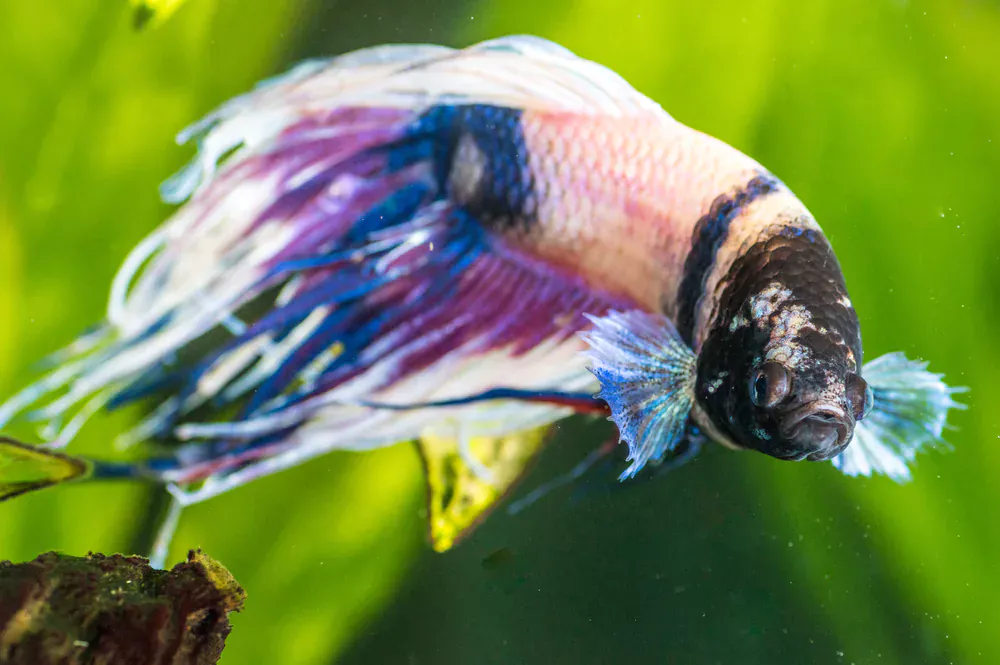
A healthy betta fish is a happy betta fish. And a happy betta fish is one who doesn’t suffer from fin rot disease! Fin rot disease is not only painful for your fishy friend but it can also spread to other fish in your tank if you’re not careful. So together we’re going to go over all the ways you can prevent fin rot disease in your Betta or Bettas:
1- Change The Water Regularly
I don’t know how many times I have said this but to prevent fin rot disease in your betta fish, you should change the water regularly. That’s the most basic and simple rule of keeping your pet fish healthy. The minimum recommended frequency is once a week. If your betta is living in a small tank (less than 5 gallons/19 liters), you should change it more frequently to prevent harmful bacteria from building up.
2- Regularly Clean The Tank
It is another most basic rule of the aquarium hobby. There are ways you can keep your tank clean:
1- Siphon the bottom of your tank: This will remove any food or debris that has fallen to the bottom of your tank, as well as any fish waste and bacteria that have formed there.
2- Use a net to clean off the top of your tank: While you’re at it, make sure to check all decor for dead leaves or other buildups.
3- Clean out your filter with a toothbrush: Rinse thoroughly after cleaning and replace with a fresh cartridge if necessary.
3- Keep Temperature Stable
One of the most important things you can do to prevent fin rot disease is to keep the temperature stable. Betta fish need a water temperature that is between 72 and 82 degrees Fahrenheit. If your tank’s temperature fluctuates significantly, it will make it much more difficult for your betta to maintain its health and well-being.
Keep in mind that if you have an indoor aquarium with a filter and heater, they will likely cause fluctuations in your tank’s water temperature. Even if you’ve set up a thermostat yourself. If this happens, try manual monitoring (only if you have the time to do so).
4- Keep The Tank Decor Clean
If you want to keep your Betta healthy and happy, it’s important to clean the gravel in his tank on a regular basis. The easiest way to do this is with two products: a gravel vacuum and a gravel siphon.
You can use the product on each rock at once, either by sucking up all of the sand through one tube or by pushing out all of the water through another tube and repeating as necessary until everything looks nice and clean.
5- Keep The Tank Decor Minimal
Even if you clean the tank daily, there may still be some bacteria that can cause problems for your fish. Bacteria are everywhere and can even grow on non-toxic objects like rocks or plants. To prevent this, keep the decor in your betta’s tank to a minimum. Just enough to make it look nice, but not so much that it could trap harmful bacteria in crevices or between pieces of decor. If you have any doubts about whether an object is safe for your fish, just don’t use it.
6- Keep The Tank Decor Natural
Here are a few tips to make this happen:
1- Use natural objects: Sand, gravel, and ornaments made from wood should be avoided as they may harbor bacteria and fungi.
2- Use plants: Plants are a great addition to any aquarium as they provide oxygen and help keep the water clean by absorbing toxic substances like ammonia and nitrites. They can also make your aquarium look beautiful, which is always nice! There are many different kinds of plants available at pet stores, so you should have no problem finding something that’s right for your betta fish tank setup.
7- Keep The Tank Decor Non-Abrasive
You should use sand, small stones, or gravel that are not abrasive. You should also make sure the tank decor is non-toxic to the fish and safe for the tank itself. This will help keep your betta healthy and prevent it from causing any damage to your betta fins.
Stages Of Betta Fish Fin Rot
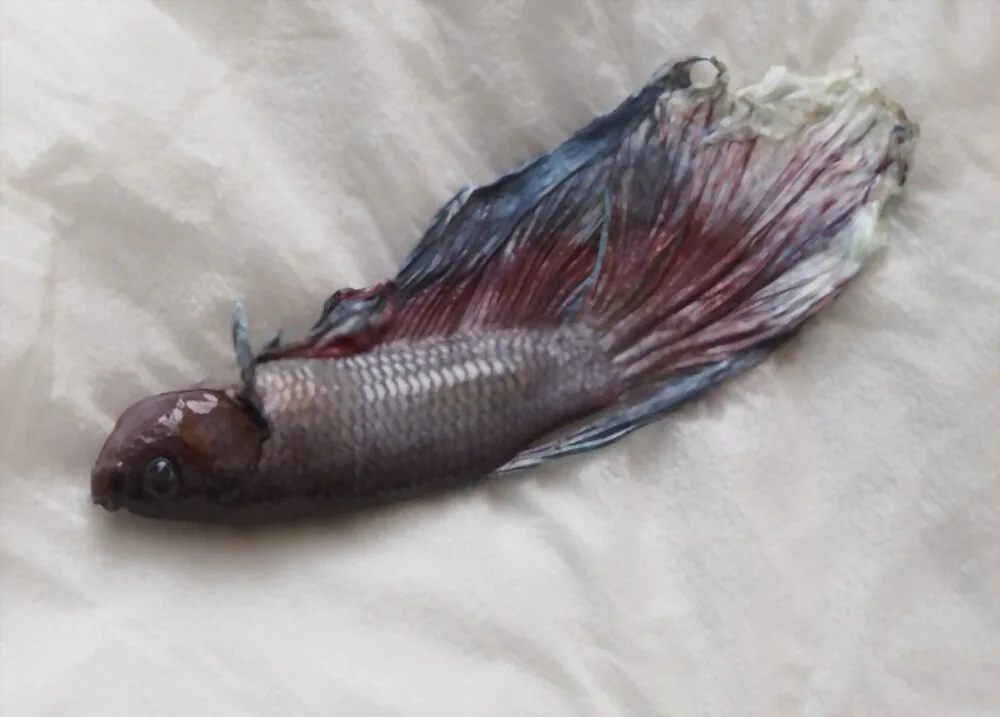
There are three stages of fin rot that will give you an idea about disease severity:
1- Mild
This is the most common stage of fin rot. It’s characterized by slight tearing of the fins, which may be accompanied by cloudy eyes and an overall dull appearance.
2- Major
This is where you’ll start to see extensive damage to your betta’s fins. They’ll begin to look shredded and shredded bits may hang off them like they’ve been chewed on by a shark or something. Your betta will still be eating normally, but his appetite might wane as he gets sicker from this stage onward.
3- Extreme
At this point your betta won’t be able to swim at all due to how badly damaged his fins have become; his eyes also might be clouded over with infection at this point too (though there could also just be some leftover mucus).
Can Betta Recover From Fin Rot?
Yes, betta fish can recover from fin rot. However, it’s important to note that the recovery process will be slow and it may take several days or weeks before they start looking like their old selves again. With proper treatment, you can help your betta fish fight off fin rot and restore their tails back to normal.
How To Treat Fin Rot In Betta Fish?
There are a few ways through which you can treat your betta fish. Please keep in mind if you don’t know what you are doing, always contact the vet.
1- Heat Treatment
The ideal temperature for treating fin rot is around 86 degrees Fahrenheit (29 degrees Celsius) for about 10 days until the infection clears up completely; however, this method is only effective for mild cases of fin rot as extreme temperatures can be stressful on its body which may lead to death if not done properly with proper equipment. They’ll need constant monitoring by someone who knows what they’re doing.
2- Anti-Fungal Medication
If you want to treat your betta at home, you can use anti-fungal medicine like Methylene Blue (Medicated Melafix) to treat the disease and prevent it from coming back again in the future.
3- Antibiotics
If you suspect your betta has fin rot, it is best to take him or her to a vet and start giving him or her antibiotics.
Fin Rot Betta: Signs Of Recovery
Once the fin rot is gone and your betta has fully recovered, there are several signs that you can look out for to see if your fish is healthy again.
The fins will grow back. After treatment, the fins of your betta will be fully grown back in no time. If they are not, then it means that treatment was not effective or it was given too late (if at all).
The betta will be active and eating normally. When a fish is sick with fin rot, it becomes lethargic and inactive which can lead to death if left untreated for too long. However, once you have treated your sick fish for its fin rot infection successfully and given it all the medications necessary for recovery; then it should be able to swim around happily in its tank again as well as eat normally without any problems at all.
Conclusion
In summary, fin rot is a painful and dangerous illness that can be fatal in bettas. It’s important to treat the disease quickly so it doesn’t spread to other fish or your pet store. You should always act fast when you see signs of fin rot because it often spreads quickly among bettas kept together in one tank and/or by touching other aquarium decorations like rocks or plants. If you notice anything unusual about your fish, take him out immediately!

